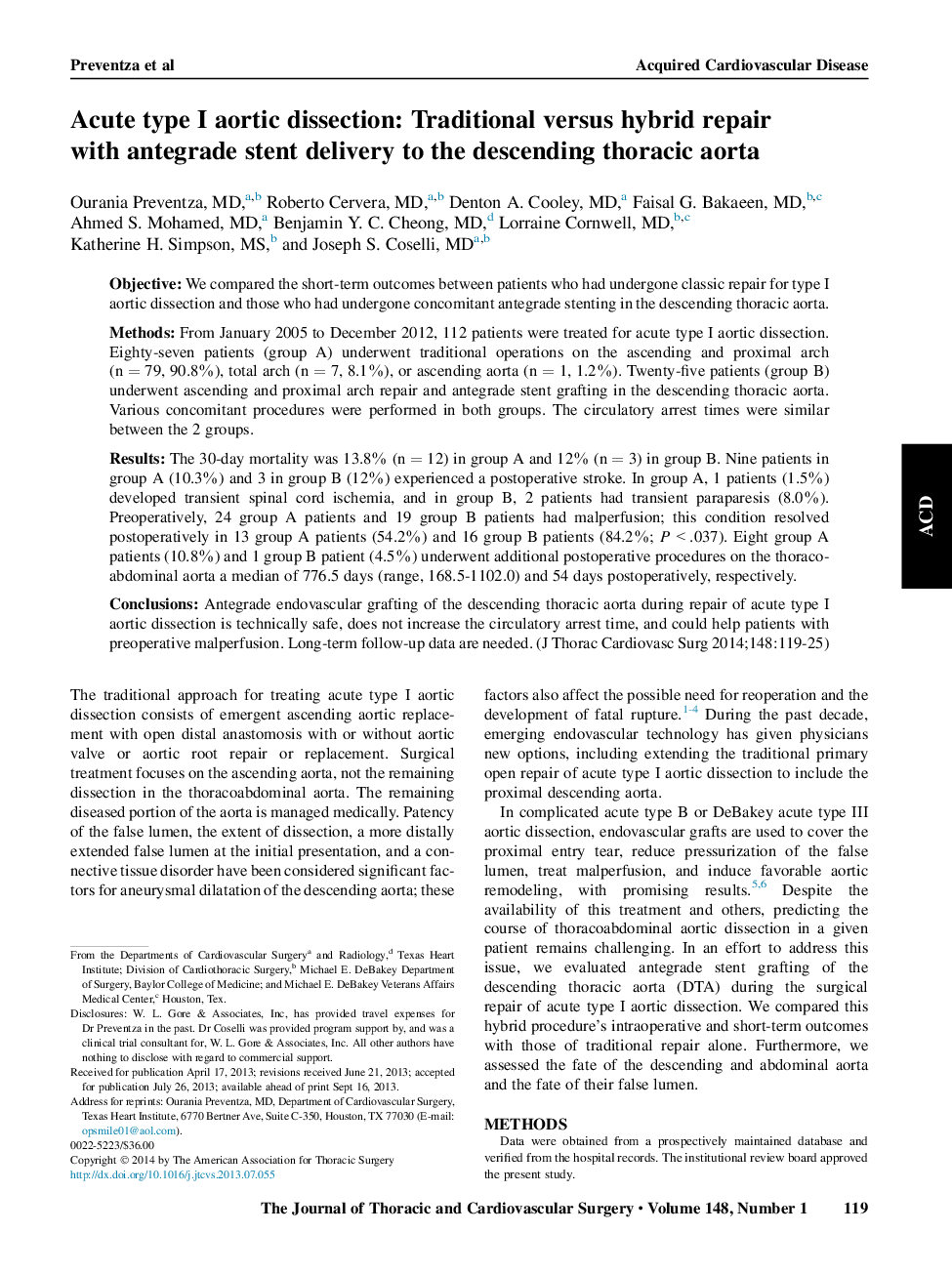| Article ID | Journal | Published Year | Pages | File Type |
|---|---|---|---|---|
| 2980753 | The Journal of Thoracic and Cardiovascular Surgery | 2014 | 7 Pages |
ObjectiveWe compared the short-term outcomes between patients who had undergone classic repair for type I aortic dissection and those who had undergone concomitant antegrade stenting in the descending thoracic aorta.MethodsFrom January 2005 to December 2012, 112 patients were treated for acute type I aortic dissection. Eighty-seven patients (group A) underwent traditional operations on the ascending and proximal arch (n = 79, 90.8%), total arch (n = 7, 8.1%), or ascending aorta (n = 1, 1.2%). Twenty-five patients (group B) underwent ascending and proximal arch repair and antegrade stent grafting in the descending thoracic aorta. Various concomitant procedures were performed in both groups. The circulatory arrest times were similar between the 2 groups.ResultsThe 30-day mortality was 13.8% (n = 12) in group A and 12% (n = 3) in group B. Nine patients in group A (10.3%) and 3 in group B (12%) experienced a postoperative stroke. In group A, 1 patients (1.5%) developed transient spinal cord ischemia, and in group B, 2 patients had transient paraparesis (8.0%). Preoperatively, 24 group A patients and 19 group B patients had malperfusion; this condition resolved postoperatively in 13 group A patients (54.2%) and 16 group B patients (84.2%; P < .037). Eight group A patients (10.8%) and 1 group B patient (4.5%) underwent additional postoperative procedures on the thoracoabdominal aorta a median of 776.5 days (range, 168.5-1102.0) and 54 days postoperatively, respectively.ConclusionsAntegrade endovascular grafting of the descending thoracic aorta during repair of acute type I aortic dissection is technically safe, does not increase the circulatory arrest time, and could help patients with preoperative malperfusion. Long-term follow-up data are needed.
